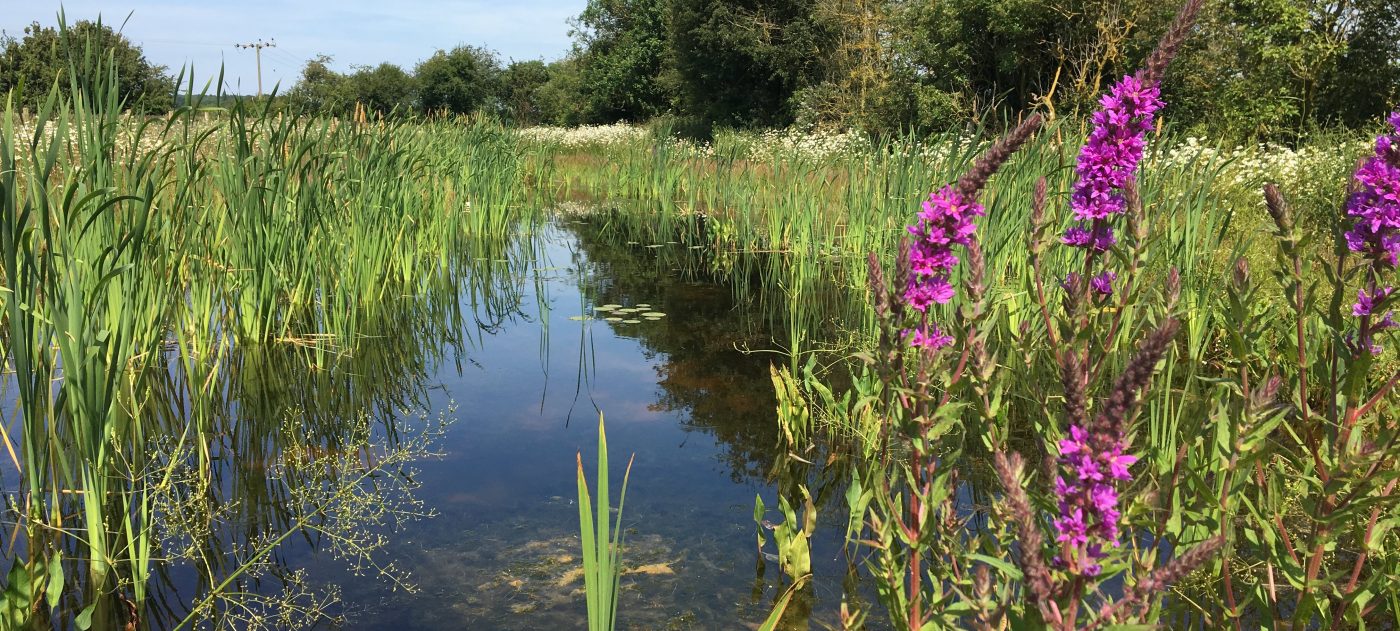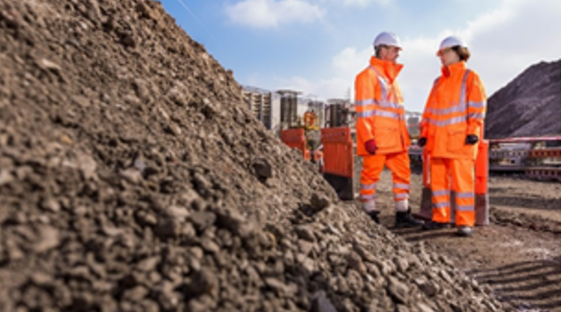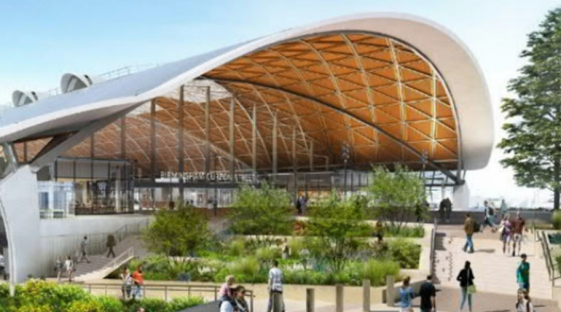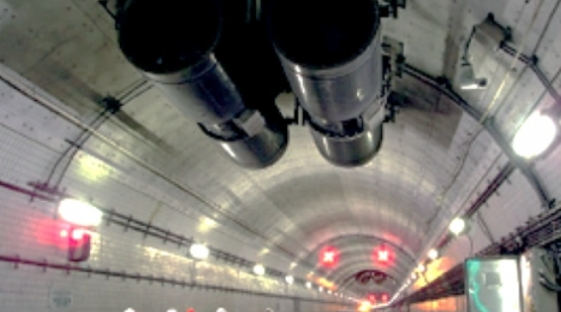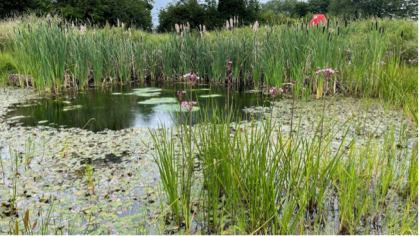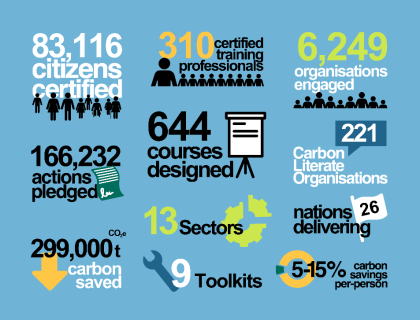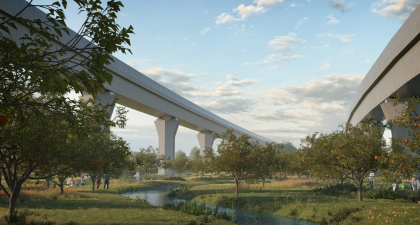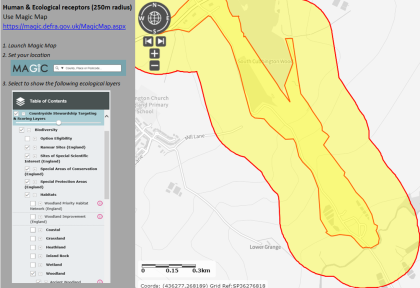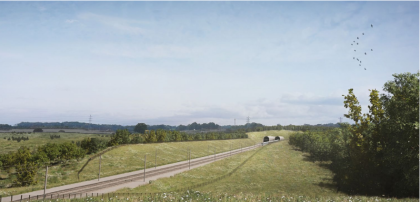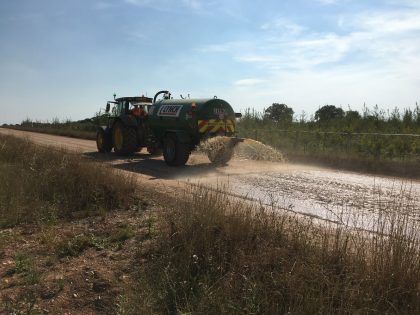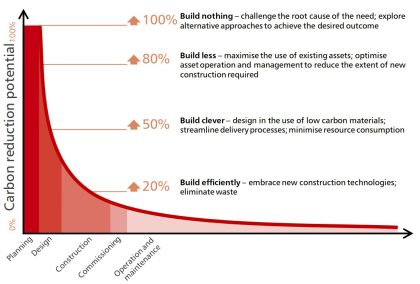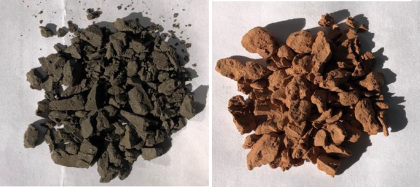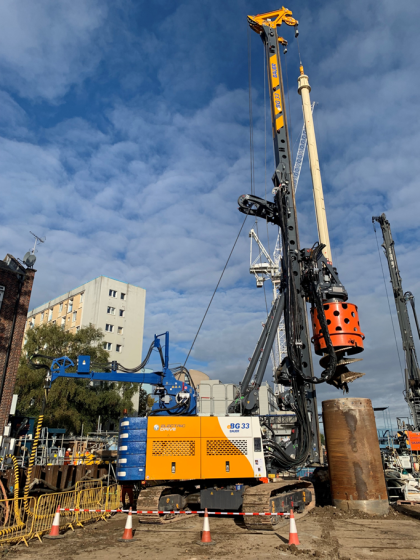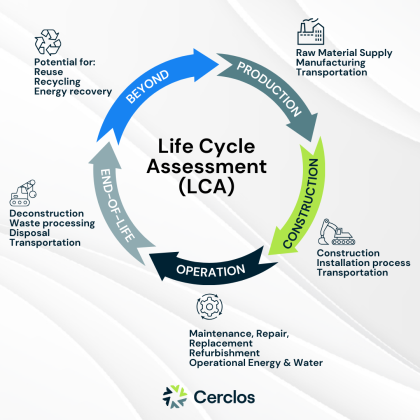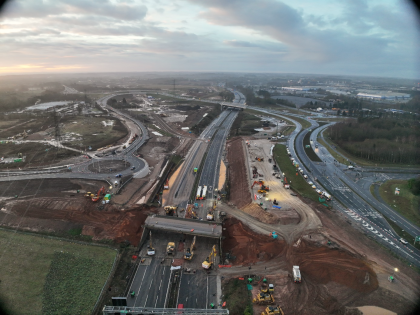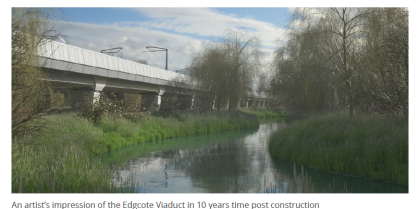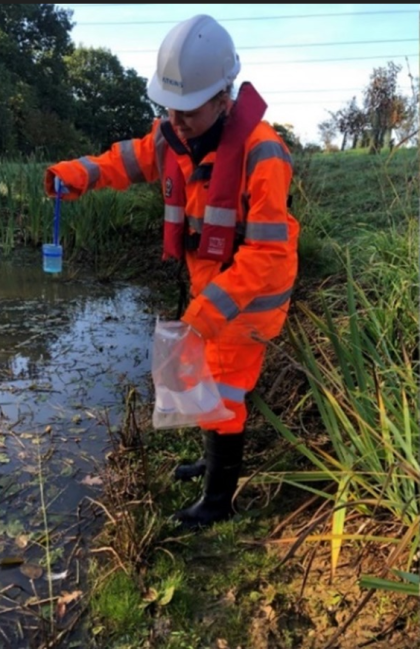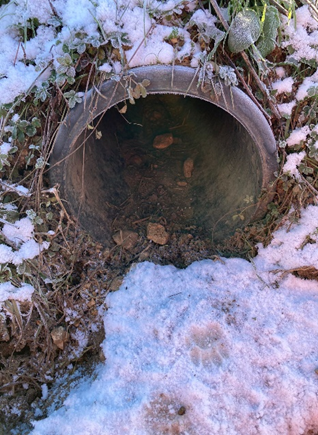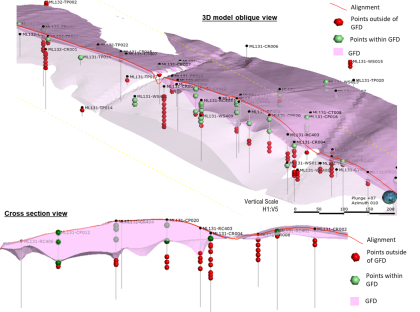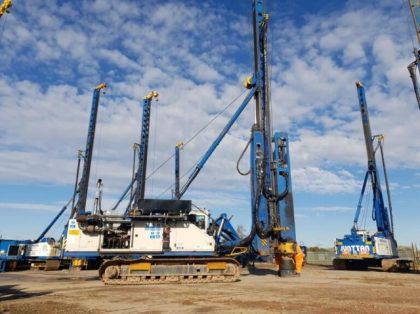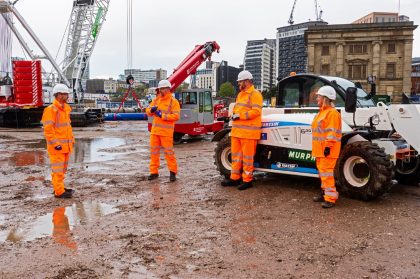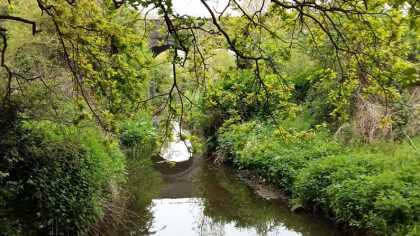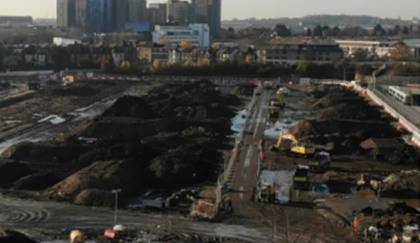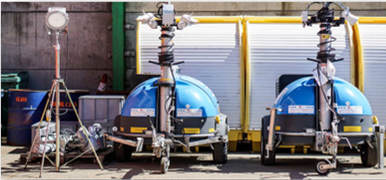Environment
An environmental, social and economically integrated approach to development that meets present needs without compromising the environment for future generations.
Topic areas
Environment Resources
Resources include papers, videos, research summaries and good practice documents produced by authors from across the HS2 Family to capture learning, good practice and innovation from the HS2 programme
-
Published on
A Weather Resilient Approach to Construction – Lessons from Align Joint Venture on HS2
Adverse and seasonal weather conditions have a significant impact on planning and delivering construction activity. Weather affects many aspects of construction, including people, operations, quality, and the environment. This can cause delay, compromise performance and impact safety, as well as the environmental performance of individual sites. Climate change is already evident in our weather and…
-
Published on
Fundamentals of Habitat Creation: Wildlife Ponds and Woodlands on HS2
This document outlines good practice and lessons learned during the design and creation of ponds and woodland for wildlife mitigation and compensation on HS2. The Enabling Works Contractors (EWC) on Phase One designed and created new woodlands equivalent to over 245 football fields and created over 180 new wildlife ponds to mitigate and compensate for…
-
Published on
Building ability and motivation to take carbon reduction action through carbon literacy learning
HS2 Ltd is committed to minimising the carbon footprint of HS2 towards a goal of net zero carbon emissions. The Net Zero Carbon Plan supports this objective and HS2 Ltd implements best practice carbon management processes to effectively manage and reduce carbon emissions. However, reducing carbon is as much about changing behaviours as it is…
-
Published on
HS2 design approach to water integrated landscapes
Being of one of Europe’s largest infrastructure projects HS2 has the potential to redefine the way we shape our environment. The development of this scheme provides an opportunity for HS2 to positively influence the socio-economic and environmental challenges by offering a nature-based design approach that is integrated and landscape-led for a sustainable and resilient future.…
-
Published on
Protection of Great Crested Newts on HS2 when using trackway
This is a summary of good practice and lessons learnt from the Phase One Enabling Works and Phase 2a Ground Investigation and Early Environmental Works about how best to deal with ensuring the protection of amphibians on a major project. The lessons learnt focus on the use of trackway and amphibians, particularly Great Crested Newts.…
-
Published on
Bromford Tunnel extension – design and environmental benefits with no additional land take
The extension of Bromford tunnel by 3km represents a major design change; how was this achieved without additional land take whilst also bringing wider benefits? Although an extended tunnel reduces the overall surface-level footprint of the High Speed Two (HS2) scheme, the corresponding additional shaft infrastructure, relocated portal and significant changes to construction logistics, bring…
-
Published on
Semi-automated construction dust risk assessment tool
Risk assessment methodologies have been published by industry bodies to predict dust risk from construction activities. However, they involve simultaneous evaluation of multiple factors and variables, so these assessments are often outsourced to external consultants with the inherent implications for cost and waiting times. A semi-automated risk assessment tool for construction dust was implemented in…
-
Published on
Landscape led earthworks on major infrastructure projects
Landscape earthworks form a major design element on the HS2 project, integrating and screening the railway and infrastructure within the landscape. These earthworks are a critical component of the scheme, forming embankments, cuttings and other landforms required to construct the route. A landscape–led earthworks design approach is vital in achieving an integrated scheme that responds…
-
Published on
Dust Suppression Trials – reduction in fugitive dust emission from construction site haul roads using water additives
A review of construction activities within High Speed Two (HS2) construction sites determined that haul roads are a major contributor to fugitive dust emissions, and can have significant detrimental effects for nearby ecological sites and people living and working in the vicinity of large construction sites. Significant quantities of water are used in the construction…
-
Published on
BBV’s carbon reduction journey towards the 50% reduction target
Balfour Beatty VINCI Joint Venture (BBV) is contributing to the “cleaner, greener future” in High Speed 2 (HS2)’s Net Zero Carbon Plan by striving to reach a 50% reduction compared to the 4,148,208 tCO2e baseline – currently having reached -43.4%. To map this journey, BBV uses the PAS2080 framework and assesses its whole life carbon…
-
Published on
Transformation of London Clay into construction resources: Calcined London Clay (CLC) as Supplementary Cementitious Material (SCM) in concrete mixes
This study has shown that London Clay, that is moderately reactive, can be successfully processed into Calcined London Clay (CLC) to be used as an alternative cementitious material in concrete. Concrete mixes containing CLC have been tested and have demonstrated robust performance in terms of both fresh and hardened properties. Building upon prior relevant work,…
-
Published on
Decarbonisation construction activities – electric piling rig
This paper details the approach taken to developing an innovative electric powered piling rig as part of the approach to achieving a diesel-free site on Euston Approaches as part of the HS2 project. This was the first electric piling rig in the UK to be implemented, operating on a renewable energy electricity tariff, and resulted…
-
Published on
Leveraging Lifetime Cycle Assessment (LCA) for smarter carbon reduction
This article explores HS2’s approach for carbon reduction, emphasising their collaborative partnership with Cerclos in implementing Life Cycle Assessment (LCA) methodology, through the eTool software. HS2 and Cerclos have worked closely to engage stakeholders, improve software to streamline processes and enhance accuracy in LCA results. This strategic partnership offers valuable insights for stakeholders seeking effective…
-
Published on
HS2 design approach to green infrastructure
This paper explores the challenges of fragmentation of green infrastructure (GI) and sustainable design solutions to preserve, defragment and strengthen GI. These approaches are explained through a series of HS2 examples of multi-functional green bridges and viaducts. The HS2 case studies used are the Calvert Green Bridges, Edgcote Viaduct and Balsall Common Viaduct. The paper…
-
Published on
Grassland translocation – successes and solutions
Grendon and Doddershall Meadows Local Wildlife Site (LWS) is located just over 1km west of Quainton in Aylesbury, Buckinghamshire. The LWS citation states that the 24.5 hectare (ha) area was designated due to its large complex of lowland meadow habitat supporting plant species unusual in Buckinghamshire, namely sneezewort (Achillea ptarmica) and fen bedstraw (Galium uliginosum).…
-
Published on
Environmental DNA surveys for great crested newts – time for regulatory changes?
Environmental DNA (eDNA) monitoring became an accepted means of surveying for great crested newt (Triturus cristatus) in 2014, following the publication of a DEFRA-funded trial, and it is now used routinely throughout the UK. Since its inception, it has been debated whether the relatively short great crested newt eDNA survey season could be extended beyond…
-
Published on
Artificial badger sett design
To mitigate for the loss of badger setts, closed due to construction of the scheme, over 30 artificial badger setts have been constructed across Phase One under a licence from Natural England. HS2 now have at least two years of monitoring for artificial setts and have reviewed data from both the design stage and post-works…
-
Published on
The cutting edge (a resilient plant procurement strategy supporting HS2’s Green Corridor)
High Speed Two (HS2) is a catalyst for growth across the UK. Along with this comes not just environmentally responsible landscape and ecological design but, offers a once in a generation opportunity to secure a green corridor that fuses the railway with its contextual landscape. Central to delivering this is HS2’s Plant Procurement Strategy. This…
-
Published on
Designing with landscape maintenance in mind
The HS2 project is delivering built infrastructure and natural environments on an unparalleled scale. The project affords a once in a generation opportunity to deliver nationally significant infrastructure that will respond to local landscape character and demonstrate an innovative and environmentally-sensitive design approach. The project has been developed to minimise it’s impacts on the surrounding…
-
Published on
Driving efficiency and sustainability in material reuse through GeoBIM
With over 21 million cubic metres of material (equivalent to 8,400 Olympic swimming pools) earmarked to be excavated and moved across the 90 km of the northern section of the High Speed Two (HS2) Phase One route, an accurate understanding of the material types for the re-use of materials in earthworks is a prerequisite for…
-
Published on
Reducing emissions in construction: Non-road mobile machinery retrofit
The latest London Atmospheric Emissions Inventory published by the Greater London Authority, indicated that Non-Road Mobile Machinery (NRMM) is a significant source of air pollution. This poses health risks and contributes to poor local air quality. To reduce emissions linked to construction activities, HS2 has set stringent engine emission standards for all plant and machinery…
-
Published on
Ancient woodland soils translocation
The construction of HS2 will affect ancient woodland sites across Phase One and Phase 2. Translocation of ancient woodland soils to a receptor site to rescue habitats that would otherwise be lost is one of a suite of proposed compensation measures. HS2 has been strongly challenged regarding the effects of the project on ancient woodland…
-
Published on
Environmental management: supply chain engagement
The Enabling Works Contract (EWC) on the northern section of High Speed Two (HS2) Phase One is delivered by the Laing O'Rourke Murphy joint venture (LMJV). LMJV is a contract management organisation (CMO) that manages the delivery of work by its supply chain. The contract is structured by almost 100 separate work packages that are…
-
Published on
Monitoring the quality of surface water during the HS2 Enabling Works, Area South
Many watercourses in London are historically culverted and built over. The main watercourses that needed to be monitored during the High Speed Two (HS2) Enabling Works Contract (EWC) were between West Ruislip and Newyears Green. To ensure water quality was not affected by construction works, a risk-based monitoring strategy was designed for the western watercourses…
-
Published on
BREEAM Infrastructure
This paper details the approach taken by the Enabling Works Contractor of the southern section of High Speed Two (HS2) Phase One to achieve an 'Excellent' score for the BREAAM Infrastructure Interim Assessment. It provides recommendations for how this learning can be applied to other similar contracts on HS2 and wider industry.
-
Published on
CSjv approach to land quality, materials and waste
The approach that Costain Skanska joint venture (CSjv) took to meet environmental standards and requirements on High Speed Two (HS2) was highly successful and a result of excellent initial understanding and planning in the early phases of the enabling works. This paper focuses on land quality management, regarding which CSjv took the rare decision to…
-
Published on
Looking further to fill our hard-to-fill vacancies
The Change 100 programme, run by Leonard Cheshire, provides valuable opportunities and learning for both industry and students or recent graduates with long-term health conditions or disabilities. Candidates gain paid experience, confidence, networks and skills as they begin their careers, and employers are granted access to additional talent pools. Participating in this programme provided a…
-
Published on
Decarbonising the EWC
Carbon management on the High Speed Two (HS2) Enabling Works Contract (EWC) was the first of its kind for the industry: it was one of the first projects to request PAS 2080 certification, achieving it in 2019. In total, carbon savings of over 4800 tonnes of CO2e were delivered through the decarbonisation of operational activities.…

